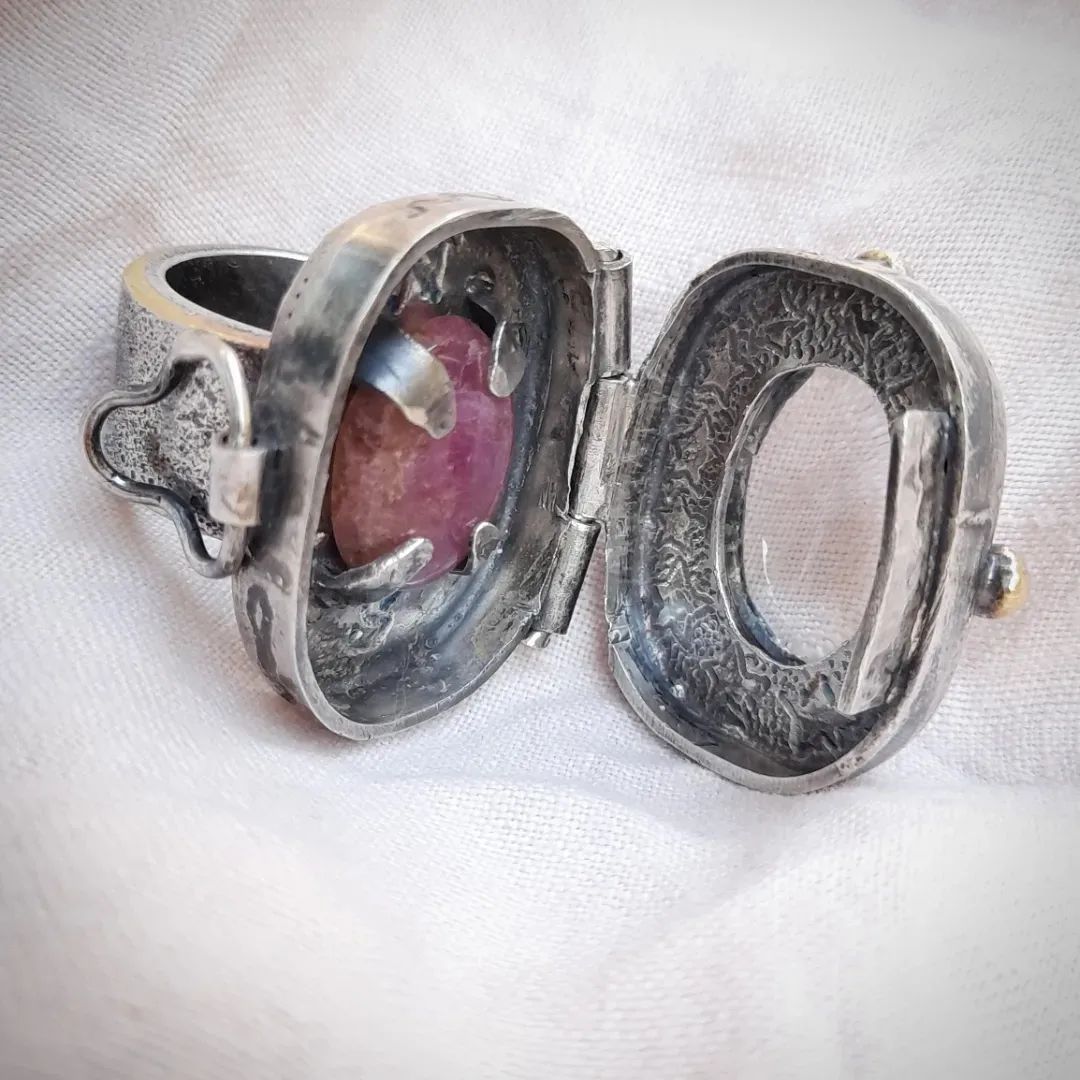It is no secret that crystals and gemstones have been beloved the world over for centuries, but have you heard of the lesser-known jewels? The ones that change colour in the sun.
The ones that grow on dead human bodies.
When I first found out that gemstones existed that should shift colour, all my childhood mood ring dreams came true! The first stone with these properties that I ever owned was a beautiful cabochon of tugtupite.
This rare stone that is closely related to sodalite, comes from Greenland, and is also referred to as reindeer stone or “Tuktu” meaning reindeer blood, this word comes from the Greenlandic Inuit word tutu, for reindeer.
A magical jewel most suited to earrings and pendants that will be spared hard blows, tugtupite only sits at 4/6.5 on Mohs scale and can be susceptible to scratches and breaking.
What makes tugtupite so special is that it displays fluorescence, phosphorescence, and my favourite… tenebrescence, meaning that the stone will change colour when exposed to sunlight, or it will darken/lighten. Tugtupite will shift from white and pale pink to the most beautiful vivid reds and purples. This process is reversable, when the stone is shielded from sunlight it will return to its original colour.
A relatively newly known gem, it was discovered in 1957, at Tugtup agtakôrfia, in Greenland. I always feel a little put off by such matter-of-fact dates in relation to the discovery of “new” things, who is to say they were not discovered thousands of years ago by a small child, digging in the dirt, or wandering a cave? And that this stone just did not have much appeal? Or that it was lost to the sands of time? How weird that so many ancient wonderous things now hold the name of a scientist or whoever made these “discoveries” such as the gemstone I will be listing below, Hackmanite.

Hackmanite (named for Victor Axel Hackman 1866 – 1941), is my personal favourite, a form of sodalite found in Greenland, Burma and Afghanistan (recently also found in Canada and the US), this gem (which is actually a rock) also displays tenebrescence.

I acquired a piece that I made into a locket ring, because also being a very fragile stone, it needed to be protected. So, I set it inside the locket, with a very clear piece of quartz over the top as a window, so that the sunlight could still reach the stone.

The piece I set in this ring, is just pure magic! It shifts from a pale cream white, through to pink, and then all the way to an almost black purple. It then takes up to a week, in a dark box, to fade all the way down to peachy white again. This phenomenon is limitless, and can be repeated over and over, the only thing that will inhibit this magical transformation, is heating the stone above 500 degrees, which destroys all colour shift properties and keeps the stone in its original pale hue.

I have not included the metaphysical and mythical properties of these stones, as they have such a limited known history (again, I am sure they have their own meanings lost to time, just as many gems, artefacts and stories that have been lost or misinterpreted) but if you wanted to go along the lines of sympathetic magic, my instincts would lead me into using these gems for physical and spiritual transformation, trance states and shifting ideas, along with all kinds of love, given their colour which would identify with purity right through to lust and passion.

Lastly, I am going to list the necromancer’s crystal, one that few people have heard of and deserves a mention.
Vivianite, (named after a British politician and industrialist, John Henri Vivian, in 1817. I will refrain from the rant that you thought was coming) This incredibly beautiful vivid green mineral, is sadly very fragile, so it is only a display piece (unless you held it in a window locket, with padding, as I have done with iron-based meteors that I don’t want damaged, and the hackmanite ring shown above). Vivianite displays pleochroism, meaning that when turned at different angles it will show different colours, being a very pale green or white when first found, it will darken in light to a dark almost black green, so this is a mineral that would need to be hidden from light to preserve its wonderful colour.
This is where it gets interesting.
Vivianite is usually found with organic material… not limited to dead human bodies, due to the combination of iron, water, and phosphate. If a human body were to be buried in a location rich in iron, with access to water, the phosphate from the teeth and bones of the body would provide the conditions for vivianite to form.
This necro-crystal has even been found in the lung tissue of the famous 5,300-year-old Ötzi the Iceman.
Now my childhood necromancy dreams are coming true! Had I known about this crystal back then, it would have been a full-blown pet cemetery situation.
Source material
https://naturalhistory.si.edu/explore/collections/geogallery/10026711
https://www.gemsociety.org/article/tugtupite-jewelry-and-gemstone-information/
https://www.minerals.net/mineral/sodalite.aspx?img=/Image/1/210/Sodalite.aspx
https://www.gemsociety.org/article/vivianite-jewelry-and-gemstone-information/
https://www.sciencealert.com/vivianite-the-blue-mineral-that-eerily-turns-buried-bodies-blue








